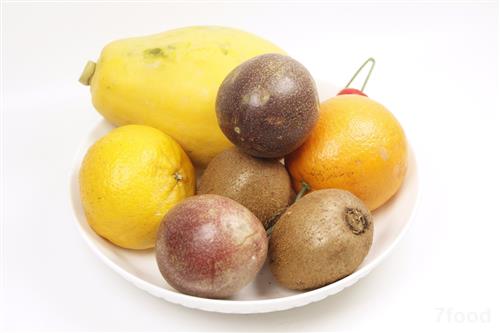Waxed fruit is generally bright and shiny. If a pigment is added to the wax, some wipes with a paper towel will leave a color on the paper towel. However, if pigments are not added, edible waxes and industrial waxes are colorless and odorless, and it is difficult for consumers to distinguish them with the naked eye. It is better to send them to a professional organization for testing to be able to detect specific ingredients. “As a chemical product, it is not ruled out that edible wax is contaminated in the production process, and it does not rule out the use of industrial waxes and pigments by lawless elements. Both edible wax and industrial wax are insoluble in water, and they cannot be removed only by water washing. of."
Why does fruit wax? What is the wax on the fruit? Will it be harmful to the body if eaten?
Fruit waxing is mainly for preservation. Wax forms a protective film on the surface of the fruit, which not only protects the skin of the fruit, improves the glossiness, but also prevents the evaporation of water and keeps the fruit delicious. In addition, germs are not easy to invade after waxing, and can be preserved and protected against insects. Waxing fruit is an internationally approved method of preservation, with mature processes and regulations.
First of all, fruit waxing is not the same as "falco oil", "pigment beverage" and other counterfeit foods. It is normal and necessary that the fruit be removed and waxed and treated. Most fruits are listed in their original state and will soon rot. And apples and other fruits have a very thin layer of fruit wax on the surface of fresh peel itself. This is secreted by the plants themselves and can prevent fruit from quickly losing moisture and the invasion of external microorganisms.
Of course, it is more common to wax fruits by hand to preserve freshness. In general, fruits such as apples or oranges are washed and water-cooled after picking, and when graded and packaged, waxers are used to wax the fruits.
After fruit waxing, it can reduce water loss, inhibit microbial invasion, reduce fruit rot, and also can inhibit post-harvest respiration of plants, delay ripening and reduce nutrient consumption. Some imported fruits need to be transported and stored long distances, and waxing can greatly extend their shelf life.
On the other hand, fruit can be kept bright after being waxed to make it more beautiful. Since 1995, apple, citrus and other products sold on the international market have to be waxed. The post-harvest waxing rate of fruits in developed countries has reached 80% to 90%.
Our country is allowed to wax the surface of fresh fruit, but must use the edible wax that meets the regulations. Food waxes are extracts of animal and plant natural waxes (the fruit itself naturally forms this substance) and its safety is evaluated.
China's 2011 edition of the "Standard for the Use of Food Additives" (1382760-2011) states that edible waxes that can be used on the surface of fruits include carnauba wax and morpholine fatty acid salt fruit wax. The former is a natural plant wax extracted from the palm leaves growing in the northeast of Brazil. The maximum amount of fruit wax on the surface of the fruit is 0.0004 g/kg; the latter is based on morpholine fatty acid salts as emulsifiers, natural animal and vegetable waxes and The fruit wax made from water can be coated on the surface of citrus, apple and other fruits to form a thin film.
According to the national regulations, morpholine fatty acid salt fruit wax can be used in an appropriate amount according to actual production needs. In addition, there are currently safer new technologies such as nano-preserved fruit wax, shell-contained candy wax, and traditional Chinese medicine preserved fruit wax, but they have not yet been fully promoted.
Therefore, if the fruit is waxed in strict accordance with relevant national standards, safety is trustworthy.

Of course, the variety and quality of fruits on the market are quite different, and it is not ruled out that some unscrupulous traders use relatively inexpensive industrial paraffin to wax the fruits and add pigments to the wax to color the fruits. Industrial waxes are complex and may contain heavy metals such as lead and arsenic. Obviously, these are harmful to the human body; and harmful ingredients in industrial waxes may permeate a small part of the skin, and if so, even peeling cannot be achieved.
So how do you distinguish between edible wax and industrial wax coated fruit?
At present, there is no relevant standard test method. In general, the fruit coated with edible wax will have a thinner and lighter film on the surface of the skin; most of the industrial wax is applied manually by the unscrupulous personnel, and the coating will be relatively thick. In addition, industrial waxes are colored and wiped clean with paper towels. Tissues are stained. If the color is particularly bright, it will be faded fruit only by hand rubbing, it is best not to buy. The above is only the author's experience. Consumers in real life, for the sake of safety, can use warm salt water to wash fruit and then peel it for food. This can be more assured.
Expert Weapon
Fruit picking looks "pretty"
Industry insiders suggest that when buying fruits, you should not only focus on selling good fruits, you can buy some more “pretty” fruits. The public can identify whether the fruit is waxed by the naked eye. If the skin of the fruit is bright and shiny, it is likely to be waxed. Experts remind the public that when buying oranges, especially navel oranges, they must choose normal fineness, look at the dermal pores of the epidermis, and have more dermal pores in the skin of the orange, which feels rougher, while the poor quality orange skin has fewer skin pores and feels relative to each other. Smoother. Appearance, the stained orange color is particularly bright red, no dyeing is pure orange. The fruit stall owner said that to select the navel orange, first observe whether the color of the navel orange is even, and then squeeze it to feel whether the flesh is full or not. “Try not to buy the color too red.”
Some medical professors recommend that waxing fruits be best peeled and eaten. Because the general wax is not water-soluble, the wax that does not peel off the skin can be washed according to the usual cleaning method, and the pesticide may remain on the surface of the fruit. In addition, there are many holes in the fruit skin that are invisible to the naked eye and the dyes easily seep into the inner flesh. Since it is not certain whether the hawkers use food-grade dyes or industrial dyes and the amount of use, it is difficult to determine how harmful the human body is. Therefore, before buying or eating fruit, the public must pay attention to whether they are dyed. Do not eat colored fruits. When eating fruit that can be peeled, it is best to peel and eat.
Fruit waxing is mainly for the sake of selling. Taking oranges as an example, there is dust on the surface of the oranges just picked from the trees. Generally, the fruit growers will wash and wax the machine first, so that the fruit is sold well and the selling price is high. Many fruits are waxed. Such as citrus, oranges, chestnuts and so on. It is understood that some large-scale citrus processing companies have a device called “fruit washing and waxing machine”. After the screening of oranges is completed, they will be automatically cleaned, disinfected, waxed and dried. Some fruit traders said that in order to make the fruit look colorful and smooth, some black heart vendors will use various dyes to color the fruit and apply a layer of wax. This will not only attract customers' attention, but also extend the storage time, even if the short-term sell, the fruit will not dry. “Umbilical oranges or oranges that use fruit waxes mainly play a role in freshness preservation. Wax forms a protective film on the surface of fruits, which not only protects the skin of fruits and improves glossiness, but also prevents fruit moisture from evaporating and retains the freshness of fruits. After the waxing, the germs are not easy to invade, and they can be preserved and sterilized.” Mr. Han, who is engaged in food safety work, told reporters that fruit waxing can not only make the fruit look good, but also extend the shelf life. It is more commonly used in citrus, fragrant pears and other fruits. .
Plant Functional Peptide
Ningbo Nutrition Food Technology Co.,ltd. , https://www.collagenworkshop.com
برچسب:
،
ادامه مطلب
بازدید:









